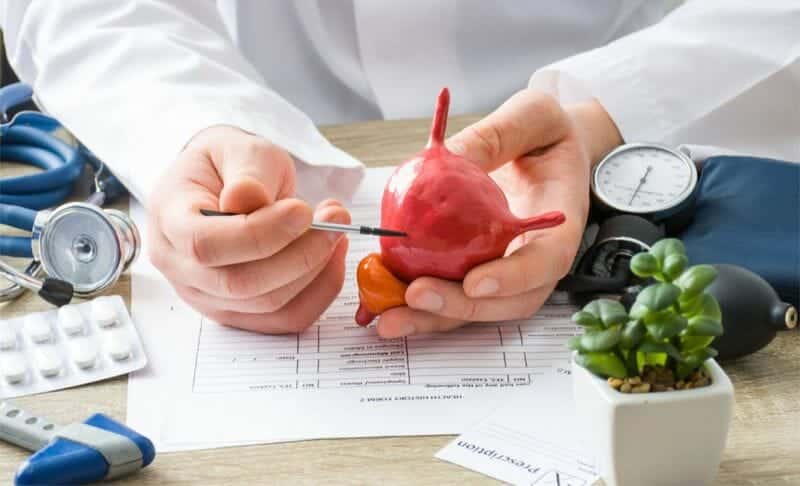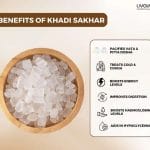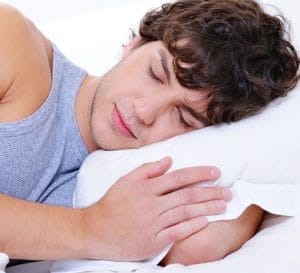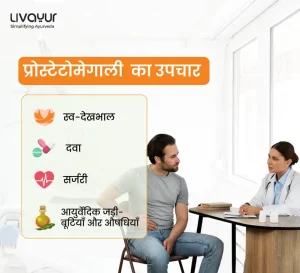
Benign Prostatic Hyperplasia (BPH), commonly referred to as an enlarged prostate, is a prevalent condition among aging men. It involves the benign enlargement of the prostate gland, which surrounds the urethra and can lead to various urinary symptoms. While Enlarged prostate is not a life-threatening condition, it can majorly impact a man’s quality of life. [1]
According to Ayurveda, there are two states referred to as mootrakruchra and mootraaghaata, which align with the symptoms of prostatism. Mootrakruchra, also known as strangury, manifests as intense pain while urinating. On the other hand, mootraaghaata involves complete inhibition or sporadic urine flow during urination. [2]
This article delves into the prostate gland enlargement symptoms, causes, diagnosis, risk factors, and treatment options for BPH.
Symptoms of Enlarged Prostate
Enlarged prostate symptoms can vary in severity and manifestation, but they generally revolve around difficulties related to urination. Common symptoms include:
Urinary Frequency:
Men with BPH often experience a frequent urge to urinate, both during the day and at night (nocturia).
Urgency:
The need to urinate may be sudden and intense, making it challenging to hold back.
Weak Stream:
The urinary stream may be weaker and less forceful, causing prolonged bladder emptying.
Incomplete Emptying:
A sensation of not fully emptying the bladder after urination can occur.
Straining:
Effort might be required to initiate or maintain urination.
Dribbling:
Urine dribbling or leakage can happen after urination.
Pain:

There may be a painful sensation during urination and urine with an unusual color and smell. [1]
Causes of Enlarged Prostate
The exact enlarged prostate causes are not fully understood, but hormonal changes associated with aging play a crucial role. Testosterone, a male hormone, is converted to a more potent form called dihydrotestosterone (DHT). DHT stimulates prostate cells to multiply, leading to the gland’s enlargement. As a result, BPH is commonly observed in older men.
As men grow older, the levels of active testosterone in their bloodstream decline, resulting in a relatively greater concentration of estrogen. To answer the question of what is the main cause of prostate enlargement, research findings propose that the development of benign prostatic hyperplasia could be attributed to this elevated estrogen ratio within the prostate, which enhances the action of substances that stimulate the growth of prostate cells. [1]
How to Diagnose Enlarged Prostate
Diagnosing Enlarged prostate involves a combination of personal and family medical history assessment, physical examination, and various medical tests. A digital rectal examination (DRE) is undertaken to study the size and condition of the prostate gland. The following diagnostic tools might be used:
Prostate-Specific Antigen (PSA) Test:
A blood test that measures PSA levels can help rule out prostate cancer, as elevated PSA levels may indicate cancerous growth.
Urinalysis:
This test helps identify urinary tract infections or other conditions that could be causing symptoms.
Uroflowmetry:
A test that measures the speed and volume of urine flow, helping to evaluate the severity of urinary symptoms
Post-void Residual Measurement:
This test determines how much urine remains in the bladder after urination, indicating incomplete emptying.
Transrectal Ultrasound (TRUS):
A probe is inserted into the rectum and it produces images of the prostate, aiding in assessing its size and condition.
Cystoscopy:
A thin tube fitted with a camera is inserted into the urethra to visually inspect the bladder and urethra. [1]
What are the Risk Factors?
Certain factors increase the likelihood of developing Enlarged prostate:
Age:

The risk increases with age, particularly after 40.
Family History:
A family history of BPH increases the risk.
Medical conditions:
Excess body weight, heart, and circulatory issues, and Type 2 diabetes are linked to a higher risk of BPH.
Lifestyle Factors:
Sedentary lifestyle, poor diet, and lack of physical activity contribute to the risk. [1]
Treatment of Enlarged Prostate
Enlarged prostate treatment options are tailored to the severity & complexity of symptoms and the impact on the patient’s quality of life. The options include:
Ayurvedic management:
Gokshura (Tribulus Terrestris):
This herb has been traditionally used to address urogenital conditions and is effective in reducing prostate enlargement. It can be prepared as a decoction by boiling coarsely ground fruit in water.
Varuna (Crataeva Religiosa) and Punarnava (Boerhaavia Diffusa):
These botanicals have demonstrated effectiveness in treating BPH symptoms, showing significant anti-inflammatory effects related to the genito-urinary tract.
Shilajit:
A herbo-mineral compound obtained from rocks in the Himalayas, often used in genito-urinary ailments.
Kshaaras (Alkaline Salts):
Yava-kshaara, derived from dried wheat plants, contains an altered form of potassium carbonate. It is indicated for gland enlargement with a focus on prostate and hence prostate gland enlargement treatment.
Ushira (Vetiveria Zizanioides):
Also known as Khas or Khus grass, it’s used traditionally for various ailments, including enlarged prostate.
Swet Chandan (Santalum Album):
Used to alleviate anxiety, mental tension, headaches, enlarged prostate, and more
Khadir (Areca Catechu):
Traditionally used as an aphrodisiac and for reducing an Enlarged prostate.
Shatavari (Asparagus Racemosus):
Aids in relieving inflammation and improving urination, including urine retention
Punarnava (Hog Weed – Boerhaavia Diffusa):
Recommended for various urinary issues associated with prostate ailments
Gorakhmundi (Globe Thistle – Sphaeranthus Hirtus):
Particularly useful for prostate enlargement
Chandraprabha Vati:
A blend of various herbal ingredients used for prostate-related issues.
Kachnaar Guggul:
A herbal supplement used to address excessive tissue growth, including Enlarged prostate. [2]
Non-Ayurvedic Management:
Watchful Waiting:
For mild symptoms, a doctor might recommend regular monitoring without immediate intervention.
Medicine for enlarged prostate:
Alpha-blockers relax prostate and bladder muscles, relieving symptoms. 5-alpha reductase inhibitors reduce DHT levels, slowing prostate growth.
Minimally Invasive Procedures:
Techniques like Transurethral Microwave Therapy (TUMT) and Transurethral Needle Ablation (TUNA) use heat to shrink prostate tissue.
Laser Therapy:
Laser techniques vaporize or remove excess prostate tissue, improving urinary flow.
Surgery:
Transurethral Resection of the Prostate (TURP) consists of removing portions of the prostate through the urethra. Open surgery is reserved for severe cases. [1]
FAQs
• Is there a method to prevent benign prostatic hyperplasia?
Men who possess risk factors for this condition should engage in discussions with healthcare professionals regarding any lower urinary tract symptoms and the necessity for routine prostate examinations. By promptly recognizing lower urinary tract symptoms and identifying prostate enlargement, men can initiate early treatment and mitigate the impact of Enlarged prostate.
• What are the latest approaches to treating an enlarged prostate?
Emerging methods to address an Enlarged prostate encompass WVTT, PAE, and UroLift. Surgical interventions remain a viable option. Complementary to these are lifestyle adjustments and bladder training, which can aid individuals in managing the symptoms associated with an enlarged prostate.
• What is the typical size of the prostate gland based on age?
At birth, the prostate gland is comparable in size to a pea and gradually develops until around the age of 20, reaching a weight of 15-20g. Between the ages of 30 and 45, the mass of the prostate remains relatively constant at 20g. The standard dimensions for a normal prostate are approximately 4cm in width, 3cm in length, and an anterior and posterior diameter of 2cm.
Conclusion
Enlarged prostate is a very common condition that can significantly impact the urinary function and quality of life of aging men. Recognizing the symptoms, understanding the enlarged prostate meaning, its causes, and risk factors, obtaining an accurate diagnosis, and exploring the range of treatment options available are crucial steps in managing this condition effectively.
Disclaimer:
This article is written from a health and wellness perspective only and is not a piece of medical advice. Kindly seek the help of a certified medical practitioner before initiating any treatment.
References:























11 Comments